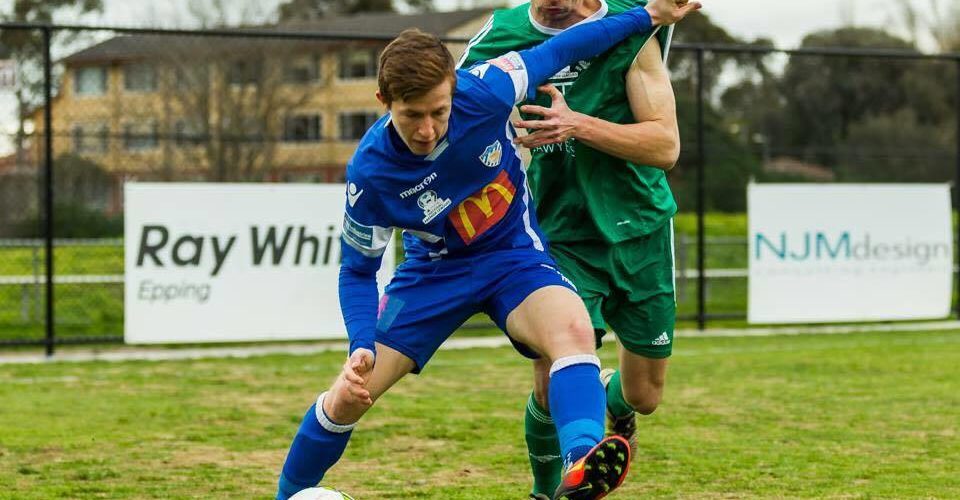Image: Graeme Furlong
As with many sports, Australia has historically been perceived as a small footballing nation capable of taking big scalps by not settling for mediocrity and taking the battle to the bigger teams.
One staple battle in football worldwide is promotion and relegation. As the NPL season reaches its conclusion, three clubs – Bulleen Lions, Richmond SC and Northcote City – will engage in their own battles to avoid relegation on the final day.
The consequences are tangible – a loss in gate revenue against the biggest top-tier clubs, a likely depleted squad that will lessen chances of an FFA Cup run, reduced media coverage, a loss of perceived prestige which may impact junior registrations.
A week ago, Port Melbourne snapped a long winless streak to escape the drop by beating Hume City – simply there’s no room for sustained mediocrity in a league with promotion and relegation.
Avondale achieved the same feat – notably without high-profile former A-League additions such as the injured Spase Dilevski, James Brown and Francesco Stella, the latter two for whom a league with relegation would have been an unfamiliar environment, and perhaps a shock to the system, before departing the club.
There’s only one side that is guaranteed relegation at this point. Melbourne Victory: a financially stable A-League club which will remain a desired destination for youth players regardless of the tier it plays in.
As a franchise for which NPL results don’t define its livelihood, could that be a reason why the team hadn’t actually picked up a point since Round 11, with results not necessarily a requirement?
Granted there were key player departures and the natural difficulty of U20 players facing off against men, but the fact remains that despite three wins in 26 games, the consequence was a number of players featured – and were praised for – performing in a friendly against Juventus and Atletico Madrid, where the results were ultimately meaningless.
Are those not the hallmarks of a system that rewards mediocrity?
READ MORE > The A-League’s Victorian talent drain
Contrast the fortunes of a player still young enough for Melbourne Victory’s youth team who was released from the A-League system: Braedyn Crowley.
The young striker was plunged into the deep end at Northcote City, a club rooted to the bottom of the table at the time.
Google his name and the most viewed video highlight is a miss for the Newcastle Jets from right in front of goal. Yet thrust in a pressure-cooker situation, the 19-year-old flourished, scoring almost a goal a game to take his tally to 13, earning a trial with Melbourne City in the process while dragging Northcote into a position where survival is a possibility.
Crowley has thrived in what he admitted has been his first experience in a do-or-die environment. Would he have played with the same desire and intensity if still in a youth environment?
Hypotheticals, perhaps. But of no doubt is that if there weren’t promotion and relegation in the NPL and NPL2, hardly anybody would take interest in a meaningless contest between clubs sitting 11th to 13th on the ladder respectively – an issue plaguing the sides out of promotion contention in NPL2, though the latter will have the threat of relegation to the state leagues next year.
Even just a short look of the relegation battles of the NPL, and not one club bent over and accepted its fate – from the desperate battle amongst North Geelong, Dandenong Thunder and Werribee City of last year, to the famous last-day goal from Connor Reddan in the 95th minute that saved Port Melbourne from the drop in season one of the NPL and sunk Ballarat Red Devils in the process.
That’s the kind of sustained interest or fight not present in the A-League. What, in the latter stages of the A-League when a club is out of finals contention, compels supporters to come out in force to will their club to some sort of outcome? And what forces a club to get its act together without the threat of relegation and the propping-up of the FFA when things do go wrong?
A look at Central Coast, for example. The consequences of a club finishing last by a record-breaking margin was the head coach earning another year at the helm – it took a defeat to an NPL club the next year to force the hierarchy’s hand.
As an aside, calls have been made for Central Coast to not look for recycled coaches and give an up-and-coming NPL coach an opportunity. Yet signings have already been made – mostly players recycled from other A-League clubs – and the club continues to refuse to spend the full salary cap. Those are the kind of circumstances that signal another bottom-half finish at best for the club, and which up-and-coming ambitious coach would realistically benefit from such a limiting environment?
Such a situation could be perceived to have been fostered out of the existence of a system that doesn’t punish mediocrity, one that Jurgen Klinsmann has similarly criticised in the USA.
It’s also a system of complacency that could be leading to a lack of Australians in top-tier European leagues. Is it possible that talented players who spend a majority of their youth and senior the A-League system, without the constant pressure of a promotion and relegation system, do not have the mental fortitude required to then succeed in an overseas league and subsequently return to Australia?
And compared to the semi-professional nature of the NSL, players can now make a comfortable living in the A-League, especially considering the statistically proven fact that once in the A-League system, it is much easier to stay there without the threat of potential NPL replacements being lined up.
READ MORE > The growing divide between NPL and A-League
Is it also possible that some of the players who weren’t developed overseas, such as Mile Jedinak, Ivan Franjic, Sasa Ognenovski, Mathew Leckie and even now a Craig Goodwin, benefited from spending a certain amount of time toiling away in Australia’s battle-hardened second tiers, where the level of pressure remains the same from the first to the last round of the season?
Jacob Eliopoulos, a 19-year-old defender who earned a trial in Cyprus with Champions League club APOEL, noted that his two seasons at Northcote and Port Melbourne, both clubs finishing in the bottom half of the table and involved in relegation scraps, had aided his development.
“My last two seasons I have been in some sort of position where we are pressured to win games in order to stay in the league, this has helped me become more confident under pressure and to realise that pressure is a good thing and brings out the best in players.”
As a nation that has historically prided itself on punching above its weight, mediocrity won’t further that cause, and promotion and relegation seems the next logical step forward in the evolution of Australian football as a way of eliminating complacency and fostering – and rewarding – ambition.

